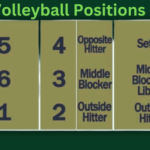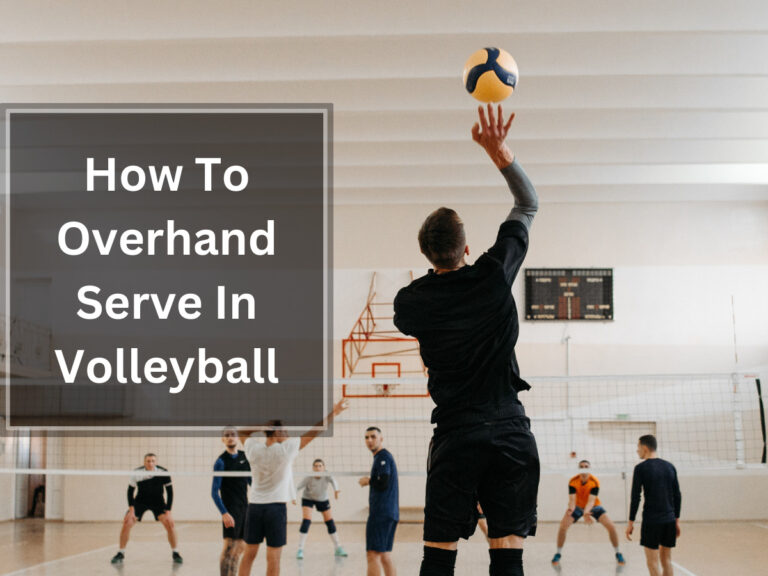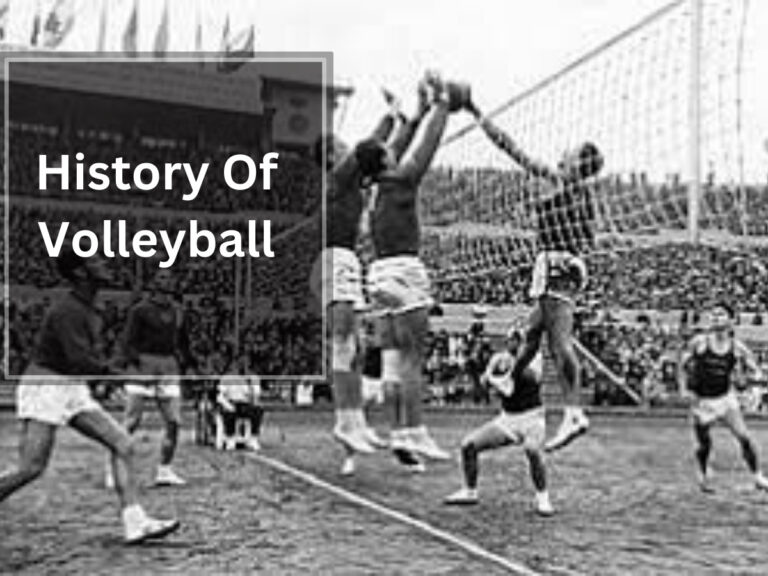Best Volleyball Setter Tips to Enhance Your Game

As a seasoned volleyball player, I can confidently say that being a setter is one of the most crucial positions on the court. It’s not just about accurately delivering the ball to your teammates, but also about strategically outsmarting your opponents and creating opportunities for your team to score.
In this article, I will share with you some valuable tips and techniques that will elevate your setting game to new heights.
First and foremost, mastering proper hand position and technique is essential. By ensuring a firm yet flexible grip on the ball, you’ll be able to execute precise sets that are easy for your hitters to attack.
Additionally, developing quick decision-making skills and enhancing communication with your teammates will allow for seamless coordination during gameplay.
But it doesn’t stop there. Perfecting timing and tempo, understanding different types of sets, utilizing fakes and misdirections – these are all aspects that set apart an average setter from an exceptional one.
So if you’re ready to take your setting skills to the next level, stay tuned as we dive deep into these invaluable volleyball setter tips. Let’s get started!
Table of Contents
Proper Hand Position and Technique
Now, let’s talk about the most crucial aspect of being a setter – your hand position and technique.
You can’t afford to overlook this if you want to be a masterful setter who leaves opponents in awe. Developing soft hands is essential for setting with precision and accuracy. By having relaxed and flexible wrists, you’ll be able to absorb the ball’s energy and create clean sets for your hitters.
Additionally, mastering setting in transition is vital for quick and efficient plays. As a setter, you need to be able to set accurately even when moving or off-balance.
Lastly, setting against a double block requires strategic decision-making and precise placement. By recognizing the defense patterns of your opponents, you can exploit openings and create scoring opportunities for your team.
So remember, perfecting your hand position and technique is the foundation of being an exceptional setter in volleyball.
Mastering Footwork and Body Positioning
With lightning-fast footwork and graceful body positioning, you’ll dance across the court like a skilled ballerina, setting up perfect plays for your teammates.
As a setter, mastering footwork and body positioning is essential for success. Developing spatial awareness allows you to anticipate the movement of both your teammates and opponents, helping you make precise sets.
Adjusting to different playing styles requires quick adjustments in your footwork and body positioning to ensure accurate sets regardless of the hitter’s preferences.
Additionally, utilizing setter dumps effectively can catch the opposing team off guard and create scoring opportunities.
By staying light on your feet and maintaining proper body alignment, you’ll be able to execute quick movements with ease, making you an invaluable asset to your team’s offense.
Developing Quick Decision-Making Skills
Developing lightning-fast decision-making skills is crucial for effectively running the team’s offense as a setter. By anticipating plays and making split-second adjustments on the court, you can enhance communication with teammates. Practice setting drills and exercises that simulate game-like situations to improve your ability to make quick decisions under pressure. Work on reading the defense and identifying open areas where you can set the ball for your hitters. Incorporate different scenarios in your training to react quickly to imperfect passes by adjusting your footwork and body positioning accordingly. Consistently practicing these skills will increase your confidence as a setter, leading to better execution of plays and increased success for your team.
Enhancing Communication with Teammates
Enhancing communication with teammates is like adding rocket fuel to your team’s performance, propelling them to new heights of success. As a setter, it’s crucial to establish proper communication techniques with your teammates on the court. Building trust and fostering a strong bond through effective callouts can greatly enhance the team’s overall performance.
One important aspect of communication is using clear and concise callouts during plays. This ensures that everyone on the team understands their roles and responsibilities. By providing specific instructions and feedback, you can guide your teammates towards achieving success on every play.
Additionally, building trust with your teammates is essential for effective communication. When your teammates trust in your abilities as a setter and leader, they’ll be more likely to follow your guidance and execute plays effectively. This creates a sense of unity within the team and allows for seamless coordination on the court.
In conclusion, enhancing communication with teammates through proper techniques, building trust, and effective callouts is vital for a setter’s success. By establishing strong lines of communication, you can create a cohesive team that performs at its best and achieves outstanding results.
Perfecting Timing and Tempo
Mastering the art of timing and tempo is like conducting a symphony. It involves orchestrating each play with precision and finesse. Creating rhythm on the court is essential for a setter to effectively connect with their hitters.
By reading the defense, I can anticipate blockers’ movements and adjust my sets accordingly. This ensures that my hitters have optimal opportunities to attack. Proper hand position and technique are also crucial in perfecting timing and tempo. Consistent hand placement, wrist control, and finger positioning allow me to deliver accurate sets every time.
Additionally, mastering footwork and body positioning enables me to make quick movements while maintaining balance. This holds true even when setting from different positions on the court. By honing these skills, I can elevate my setting game to new heights and create a sense of unity within my team’s offense.
Improving Accuracy and Consistency
Now that we have discussed the importance of perfecting timing and tempo as a volleyball setter, let’s move on to the next crucial aspect of setting – improving accuracy and consistency.
As a setter, one of my main goals is to ensure that every set I deliver is precise and consistent, allowing our hitters to effectively execute their attacks. To achieve this, I focus on refining my setting technique through continuous practice and attention to detail.
I work on honing my hand positioning, footwork, and body control to enhance the accuracy of my sets. Additionally, I strive for consistency by maintaining consistent contact point with the ball and maintaining a steady rhythm in my setting motion.
By constantly striving to improve my setting accuracy and consistency, I can provide my team with the best possible opportunities for success on offense.
Setting Different Types of Sets
Improve your ability to set different types of sets by incorporating variations in speed, height, and location to keep the defense guessing and create opportunities for your hitters.
As a setter, it is crucial to have a diverse range of setting strategies in your arsenal. By reading the defense and analyzing their positioning, you can make informed decisions on which type of set will be most effective.
Adjusting the speed of your sets can catch the opposition off guard and disrupt their blocking timing.
Changing the height of your sets can create different angles for your hitters to attack from.
Additionally, varying the location of your sets can exploit weaknesses in the defense and open up scoring opportunities.
Developing offensive playcalling skills will also help you effectively communicate with your team and execute well-coordinated attacks.
Mastering these techniques will elevate your setting game and make you an invaluable asset to your team’s success.
Understanding the Role of a Setter in Offense
Get ready to embrace your inner quarterback and lead the offense like a boss by understanding the crucial role of a setter in orchestrating those killer attacks.
As a setter, I know that proper hand placement is key to delivering accurate and consistent sets. By positioning my hands with precision, I can ensure that the ball is set at the perfect height and speed for my hitters to unleash their power.
To maximize our team’s offensive potential, I employ various setting strategies. Whether it’s running quick-tempo plays or utilizing deceptive combination plays, my goal is to keep the opposition guessing and create scoring opportunities.
Additionally, building a strong connection with my hitters is essential for success on the court. Through effective communication and understanding their preferences, strengths, and weaknesses, I can deliver sets that cater to their individual needs.
Being a setter is not just about distributing the ball; it’s about being a leader, making split-second decisions, and taking charge of the offense. With proper hand placement, strategic setting strategies, and a strong connection with my hitters, I am able to orchestrate an unstoppable offense that leaves our opponents scrambling.
So step into your role as a setter with confidence and watch as your team dominates the game!
Utilizing Fakes and Misdirections
Embrace the art of deception and elevate your setting game by incorporating fakes and misdirections into your offensive strategies. Faking strategies can be a powerful tool to keep the defense guessing and create scoring opportunities for your team.
By using deceptive plays, you can manipulate the blockers and open up gaps in their defense. One effective way to deceive the opposition is through deceptive hand movements. By disguising your intended set with subtle changes in hand positioning or movement, you can confuse the blockers and create openings for your hitters.
Mastering these faking techniques requires practice and precision, but once perfected, they can greatly enhance your setting skills and make you a more formidable opponent on the court.
So don’t be afraid to incorporate fakes and misdirections into your offensive arsenal – they might just be the key to unlocking success for your team.
Practicing Setting Drills and Exercises
Now that we’ve discussed the importance of utilizing fakes and misdirections as a volleyball setter, let’s dive into the next subtopic: practicing setting drills and exercises.
As a setter, honing your setting skills is crucial for success on the court. To help you improve, I will share with you some valuable tips and strategies.
- Enhance hand-eye coordination: Incorporate drills that focus on improving your hand-eye coordination, such as juggling or reaction ball exercises. This will help you react quickly to unpredictable passes.
- Develop a setting strategy: Practice different types of sets – high balls, quick sets, back sets – to increase versatility in your game. Experiment with various angles and heights to keep opponents guessing.
- Set under pressure: Simulate game-like scenarios during practice by adding pressure situations. This can include timed drills or incorporating blockers in your training sessions. The goal is to train yourself to make accurate sets even in challenging circumstances.
- Seek feedback from coaches and teammates: Regularly communicate with your coaches and teammates to get their input on your technique and decision-making. Their insights can provide valuable perspectives for improvement.
By incorporating these practices into your training routine, you’ll be well-equipped to excel as a volleyball setter and contribute significantly to your team’s success.
Frequently Asked Questions
How can setters improve their hand position and technique?
To improve hand placement and technique, I focus on drills that enhance my hand-eye coordination. I use specific exercises that target setting skills, such as wall sets and partner drills. These help me develop consistency and precision in my sets.
What are some tips for mastering footwork and body positioning as a setter?
Mastering footwork and body positioning as a setter is crucial for precise sets. Incorporate footwork drills and body positioning exercises to improve setter movement patterns. These techniques will enhance your ability to deliver accurate and effective sets.
How can setters develop quick decision-making skills on the court?
To develop quick decision-making skills on the court, I recommend incorporating decision-making drills into your training. Practice reading the defense and setting in high pressure situations to improve your ability to make split-second decisions that benefit your team.
What are some strategies for enhancing communication with teammates as a setter?
Enhancing communication with teammates as a setter involves using non-verbal cues, building trust, and active listening. It’s important to establish a strong connection on the court, creating a sense of belonging and unity within the team.
How can setters perfect their timing and tempo when setting the ball?
To perfect timing and tempo when setting the ball, setters need to develop a strong sense of rhythm and anticipation. It requires practice, focus, and understanding the preferences of each hitter on the team.










